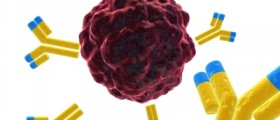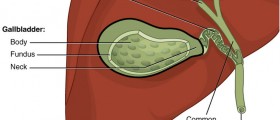Gallbladder tumors are not so common growths. However, thanks to improvements in imaging techniques and their increased utilization doctors can easily confirm the presence of these tumors even during routinely performed exams or exams performed for other purposes.
It is estimated that around 5% of people who undergo ultrasonography of the abdomen will be diagnosed with a gallbladder polyp. Malignant gallbladder tumor (gallbladder cancer) does not occur so frequently. It is essential to mention that some gallbladder polyps may eventually transform into malignant tumors and this is why they require proper treatment.

The Gallbladder: Benign Lesions
Out of all benign gallbladder lesions only adenomatous polyps are considered to be precancerous lesions, with the potential to transform into cancer. Benign lesions of this organ can be easily identified with an ultrasound of the abdomen, but more details are achieved with a CT scan or MRI of the area. The pathohistological analysis is only possible after taking samples of the tumor or complete surgical removal of the growth.
- Endoscopic US (EUS) is usually performed for gastrointestinal diseases, but it is also used to evaluate polyps or wall thickening of the gallbladder. EUS-enabled gallbladder assessments are more accurate, because a high-frequency transducer (5-12 MHz) is closely applied, without interposition of other anatomic structures. However, the invasiveness of EUS procedures, their low tolerability, high cost, longer duration, and need for sedation are all drawbacks and it is not routinely used for evaluation of the gallbladder.
- MRI is considered a problem-solving tool, reserved for unclear gallbladder cases at US or CT. As a multiparametric imaging technique, it provides high-contrast resolution of tissue and permits both anatomic and functional assessments of gallbladder/biliary tract, using contrast excreted preferentially in the bile. However, MRI is still expensive and time-consuming.
- Contrast-enhanced US (CEUS) is an emerging imaging modality widely used to evaluate various abdominal organs. Using microbubble contrast, tissue microvascularity is thereby explored, overcoming limitations of conventional US through clearer and more accurate evaluation. Microbubble contrast is safe and has a low risk of adverse effects, compared with CT or MRI contrast; and it is applicable to either transabdominal US or EUS.
- High-resolution ultrasound (HRUS) is a technology that uses both low- and high- frequency transducers during the gallbladder evaluation. Whereas conventional transabdominal US usually only uses a low-frequency transducer from 2 to 5 MHz, HRUS can be simply applied by addition of a high-frequency transducer after routine transabdominal US. Therefore, HRUS harnesses the combined strengths of low- and high-frequency transducers.
- Diffusion-weighted imaging (DWI) is now accepted in clinical practice as one of the advanced MRI sequences. It reflects the degree of microscopic movement by water protons, which represents the tissue characteristics and pathologic process.
Cholesterol Polyps
Around half of all polypoid growths of the gallbladder are cholesterol polyps. It seems that these tumors develop as a consequence of an abnormality in cholesterol metabolism. Cholesterol polyps are yellow tumors located on the mucosal surface of the organ. They contain macrophages with ingested triglycerides and esterified sterols. A person may have multiple such tumors in the gallbladder with most of them not exceeding 10 mm in size. In most cases, when the tumor is solitary and not large, patients do not complain about any health issues.
Adenomyomatosis
This is a condition characterized by thickened gallbladder with many intramural diverticula. The appearance of adenomyomatosis may resemble adenomatous polyps or even gallbladder cancer and this is why it requires further evaluation. Also, some scientists believe that adenomyomatosis may be an initiator of gallbladder cancer. Therefore, it may require more aggressive treatment.
Adenomyomatous Polyps
These are primary benign lesions with the potential to develop into gallbladder cancer. A tumor mass is pedunculated i.e. supported by a peduncle. The tumor is complex and branching protruding inside the lumen of the organ.
Inflammatory Polyps
Such benign lesions develop due to chronic inflammation and may also protrude inside the lumen of the gallbladder being attached to the wall by a narrow stalk.
Other Benign Gallbladder Lesions
Apart from the mentioned there are several more benign lesions that may develop in this organ. They include fibromas, lipomas, hemangiomas, heterotrophic tissue and granular cell tumors.
The treatment for almost all benign gallbladder tumors is surgical resection.

















Your thoughts on this
Loading...